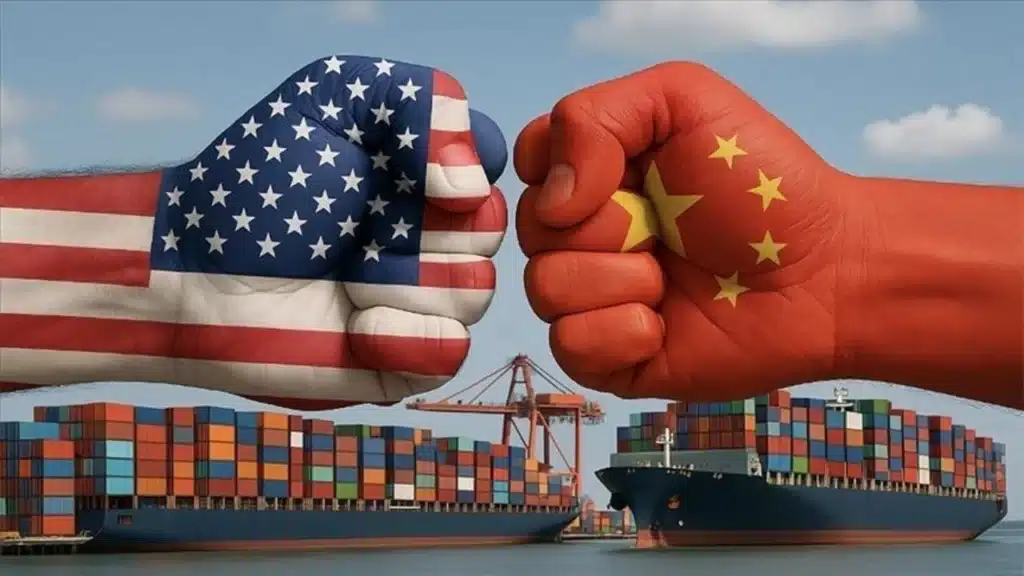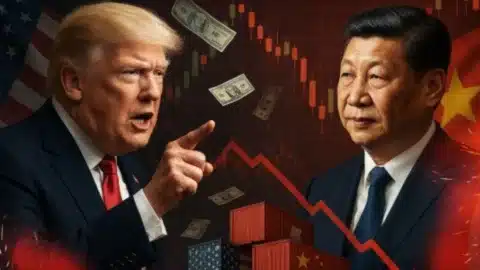The United States has announced a sweeping new round of trade measures against China, with President Donald Trump confirming an additional 100% tariff on all Chinese imports. The tariffs will take effect on November 1, 2025, and will apply on top of existing duties, pushing the total tax on many products to as high as 130%.
The move comes just a day after Beijing introduced new export restrictions on rare earth minerals and high-tech materials, which are critical to industries such as semiconductors, electric vehicles, and defense production.
President Trump described China’s actions as “extraordinarily aggressive” and accused Beijing of attempting to “undermine global trade fairness.” He added that the U.S. would also impose export limits on sensitive software and critical technologies heading to China.
Key Highlights
- Effective Date: November 1, 2025 (or sooner, depending on China’s response).
- Total Impact: Tariffs could raise the overall duty on Chinese imports to around 130%.
- Scope: The new tariff applies to electronics, automotive parts, metals, and other key products.
- U.S. Export Controls: New restrictions will limit American software and technology exports to China.
- Market Reaction: Major global stock markets saw sharp declines after the announcement, reflecting fears of renewed trade tensions.
Why the Tariffs Were Announced
According to the White House, the new tariff aims to counter China’s trade restrictions and protect U.S. national and economic interests.
China’s recent export control measures on rare earth materials are viewed in Washington as a major threat to global supply chains, as these minerals are essential for advanced electronics and military technology.
Officials described the tariff decision as a defensive step to “restore balance” in trade relations and reduce U.S. dependence on Chinese materials.
Impact on the Economy and Consumers
Economists warn that the new tariffs could lead to higher prices for everyday goods such as electronics, clothing, and household appliances.
Businesses relying on Chinese manufacturing may face increased costs and supply delays, while inflationary pressure could rise in the U.S. economy.
Global supply chains are also expected to feel the strain, with analysts predicting disruptions in technology and manufacturing sectors worldwide.
Meanwhile, China could retaliate by imposing its own tariffs or expanding its export bans, potentially triggering a new phase in the long-running U.S.–China trade dispute.
What Happens Next
- The U.S. Department of Commerce will soon release detailed rules and product lists for the new tariffs.
- China is expected to announce countermeasures in the coming weeks.
- The ongoing tension may affect the planned Trump–Xi meeting at the upcoming APEC Summit in South Korea.
- Financial experts caution that continued escalation could slow global growth heading into 2026.
Summary
The additional 100% tariff on Chinese imports marks one of the most significant developments in U.S.–China relations in recent years.
While Washington sees the move as a way to defend its economic interests, critics warn it could spark another round of global trade instability.
As both nations harden their stances, the world watches closely to see whether diplomacy or confrontation will define the next chapter in this economic rivalry.
Frequently Asked Questions (FAQs)
1. What is the new U.S. tariff on China?
The U.S. has imposed an additional 100% tariff on all Chinese imports, effectively doubling the existing duties and raising total rates to about 130%.
2. When do the new tariffs take effect?
They are scheduled to begin on November 1, 2025, though the start date could move up if tensions rise further.
3. Why did the U.S. impose these tariffs?
The move is a response to China’s new export restrictions on rare earth materials, which Washington views as an unfair trade practice threatening national security.
4. How will this affect U.S. consumers and businesses?
Prices for imported goods like electronics, auto parts, and industrial equipment may rise, while companies could face supply chain delays and higher production costs.
5. Could this lead to another trade war?
Yes. Economists warn that escalating tariffs and export bans could reignite a global trade conflict, disrupting manufacturing and slowing economic growth worldwide.






